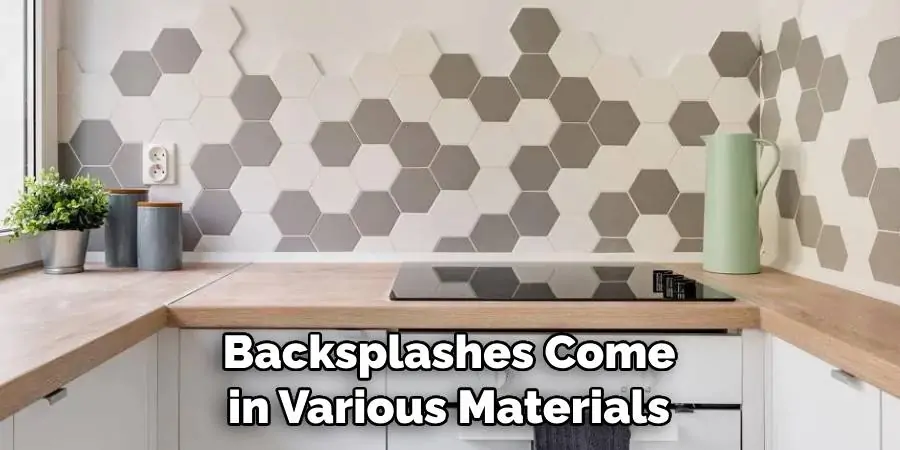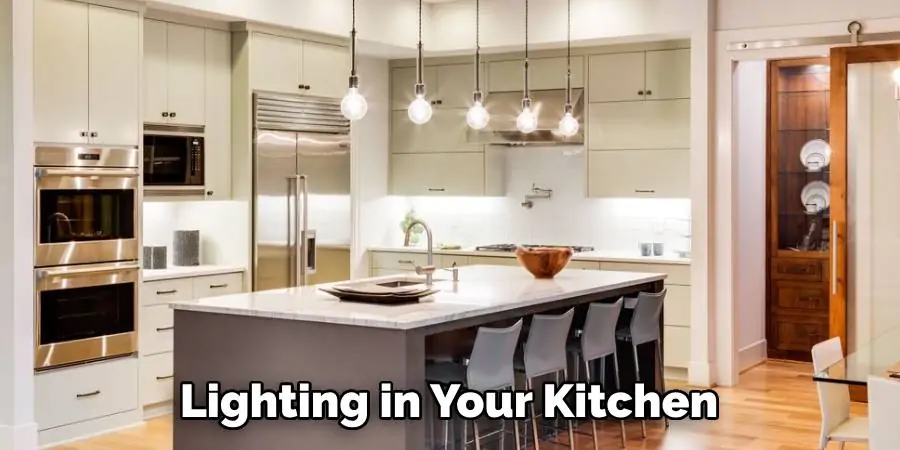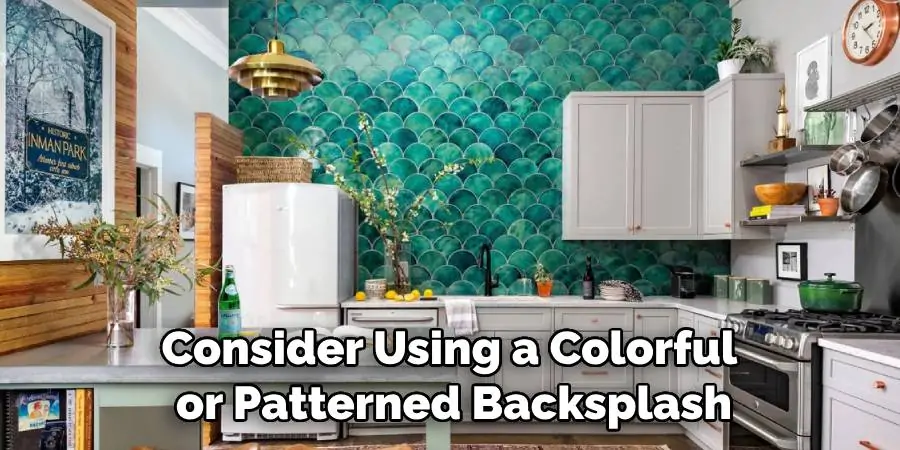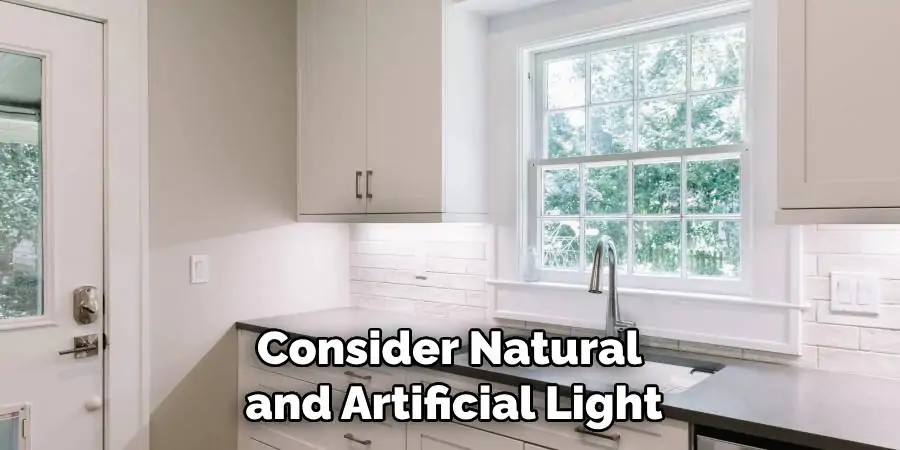A backsplash is an essential element in any kitchen or bathroom design. It not only serves as a protective barrier for your walls, but it also adds style and character to the space. Choosing the right backsplash can be a challenging task, with so many options available in the market. In this guide, we will discuss how to choose a backsplash that best suits your needs and preferences.

Why is a backsplash important?
Before we dive into the tips for choosing a backsplash, let’s understand why it is an essential element in your kitchen or bathroom design. A backsplash protects your walls from water, grease, and other stains that can easily occur in these areas. It also makes cleaning up easier as you can simply wipe down the surface instead of having to scrub the walls.
Moreover, a well-chosen backsplash can add personality and style to your space. It is an opportunity to bring color, texture, and pattern into your kitchen or bathroom design. It can tie together all the elements of the room and create a cohesive look.
How to Choose a Backsplash for Your Kitchen: 7 Essential Tips
Choosing the right backsplash can transform your kitchen from ordinary to extraordinary. It’s not just a functional part of your kitchen; it’s a statement of style and personality. Here are seven essential tips to help you choose the perfect backsplash for your kitchen.
1. Consider Your Kitchen Style
Before diving into colors and materials, think about your kitchen’s overall style. Is it modern and sleek, rustic and cozy, or classic and elegant? The backsplash should complement the existing design to create a cohesive look.
2. Choose the Right Material
Backsplashes come in various materials, each offering different aesthetics and functionalities:
- Ceramic Tiles: Affordable, easy to clean, and available in countless styles.
- Glass Tiles: Reflective surface adds depth and brightness.
- Stainless Steel: Perfect for a modern, industrial look.
- Natural Stone: Adds texture and a touch of luxury.
- Subway Tiles: Timeless and versatile.

3. Think About Maintenance
Consider how much time you’re willing to spend on maintenance. Materials like ceramic and glass are easy to clean, while natural stone might require more upkeep to prevent staining and damage. If you prefer a low-maintenance option, ceramic and glass tiles are excellent choices as they can be easily wiped clean. However, if you’re willing to invest the time in sealing and maintaining, natural stone can provide a beautiful, high-end look.
4. Color Coordination
Your backsplash should harmonize with the color scheme of your kitchen. You can either choose a color that complements your cabinets and countertops or opt for a contrasting hue to make the backsplash a focal point. A bold color or pattern can draw attention and create a stunning visual impact. For instance, a vibrant mosaic design or a bold, single-colored tile can make your backsplash the centerpiece of your kitchen. If your cabinets and countertops have busy patterns, a simple, solid-colored backsplash can balance the look.
5. Size and Pattern Matter
The size of the tiles and the pattern in which they are laid can significantly impact the overall look:
- Large Tiles: Fewer grout lines, making the space look larger and more streamlined.
- Small Tiles: Great for creating intricate patterns and adding texture.
- Pattern Layouts: Herringbone, chevron, and stacked patterns offer different visual effects.
6. Don’t Forget About Lighting
The lighting in your kitchen will affect how the backsplash looks. Under-cabinet lighting can highlight the backsplash and enhance its visual appeal. Consider how natural and artificial light will interact with the color and material of your backsplash when making your selection.

7. Budget Wisely
Backsplashes can vary dramatically in cost. Set a budget before you start shopping to avoid overspending. Remember that installation costs can also add up, so factor that into your budget planning. Some materials may be affordable, but the installation process can be labor-intensive and therefore more expensive. For instance, custom mosaic designs or natural stone installations might require skilled labor, which can increase the overall cost.
On the other hand, simpler materials like ceramic tiles often come with lower installation costs due to their ease of application. It’s essential to balance your desired look with your budget to find the perfect backsplash that meets both your aesthetic and financial goals. Prioritizing your needs and knowing where to splurge or save can help you achieve a beautiful, functional kitchen without breaking the bank.
How to Install a Kitchen Backsplash
If you have some DIY skills, you can save money by installing the backsplash yourself. Here are the basic steps to follow:
- Prepare the Area: Clean and dry the wall surface where you will install the backsplash. Cover any outlets, switches, or appliances with painter’s tape to avoid getting grout or adhesive on them.
- Measure and Cut: Measure the area where you will install the backsplash and cut the tiles accordingly. Don’t forget to leave space for grout lines.
- Apply Adhesive: Using a trowel, apply thinset adhesive to the wall surface in small sections at a time.
- Lay Tiles: Place the tiles on the wall, pressing them firmly into place. Use spacers to ensure even spacing between tiles.
- Grout: Once the adhesive has dried, remove the spacers and use a grout float to spread grout over the tiles, filling in all gaps.
- Clean Up: Once the grout has dried, use a damp sponge to wipe any excess grout off the tiles.
- Seal (optional): If you are using natural stone tiles, it is recommended to seal them for extra protection against staining and damage.
Additional Tips for Choosing a Backsplash
- Consider the overall design and style of your home, not just the kitchen or bathroom, when choosing a backsplash.
- Don’t be afraid to mix materials. Combining different textures and finishes can create a unique and eye-catching look.
- If you want a bold statement, consider using a colorful or patterned backsplash in an otherwise neutral space.
- Take into account the functionality of the space. For example, if you have children or cook frequently, choose durable and easy-to-clean materials.

In conclusion, choosing a backsplash requires careful consideration of various factors such as design, material, maintenance, and budget. By following these tips and taking your time to explore different options, you can find the perfect backsplash that not only protects your walls but also adds personality and style to your kitchen or bathroom. So, make sure to give this important design element the attention it deserves!
5 Things to Avoid When Choosing a Backsplash
While there are many things you should do when choosing a backsplash, there are also some common mistakes you should avoid:
- Ignoring the Style of Your Kitchen: As mentioned earlier, the backsplash should complement the existing design of your kitchen. Don’t choose a material or style that clashes with the overall look.
- Forgetting About Functionality: Don’t sacrifice functionality for aesthetics. Consider how easy it is to clean and maintain the material you choose.
- Going Over Budget: Set a budget and stick to it. It’s easy to get carried away and overspend on materials or installation costs.
- Not Considering Lighting: The lighting in your kitchen can significantly impact how the backsplash looks. Make sure to consider natural and artificial light when choosing a color and material.
- Rushing the Decision: Take your time to explore different options and make an informed decision. Rushing can lead to regrets or costly mistakes down the line. Remember, a backsplash is meant to last for many years, so choose wisely! With these tips in mind, you can confidently choose the perfect backsplash that will enhance the design and functionality of your kitchen or bathroom.

Frequently Asked Questions
What is the Rule of Thumb for Backsplash?
The general rule of thumb for backsplash is to choose a material that complements the overall design and color scheme of your kitchen or bathroom. It should also be easy to clean and maintain, and within your budget. The size and pattern of the tiles can also impact the overall look, so consider these factors as well when making your decision.
How Do You Decide on a Backsplash?
To choose the right backsplash for your space, consider the style and design of your kitchen or bathroom, the functionality of the area, and your budget. Take into account how lighting will affect the color and material you choose. It’s also helpful to gather inspiration from magazines, websites, or home improvement shows before making a decision.
Should the Backsplash Be Lighter or Darker Than the Countertop?
There is no right or wrong answer to this question. Some designers recommend choosing a backsplash that is slightly darker than your countertop for contrast, while others suggest keeping them in the same color family for a cohesive look. Ultimately, it depends on your personal preference and the overall design of your space.
Final Thoughts
In this guide, we have discussed the importance of backsplashes in protecting your walls and adding style to your kitchen or bathroom. We have also provided tips on how to choose a backsplash for your space, as well as things to avoid when making a decision. By following these guidelines and taking your time to explore different options, you can find a backsplash that not only serves its purpose but also adds personality and charm to your home. So go ahead, get creative, and make a statement with your backsplash! Happy designing!
